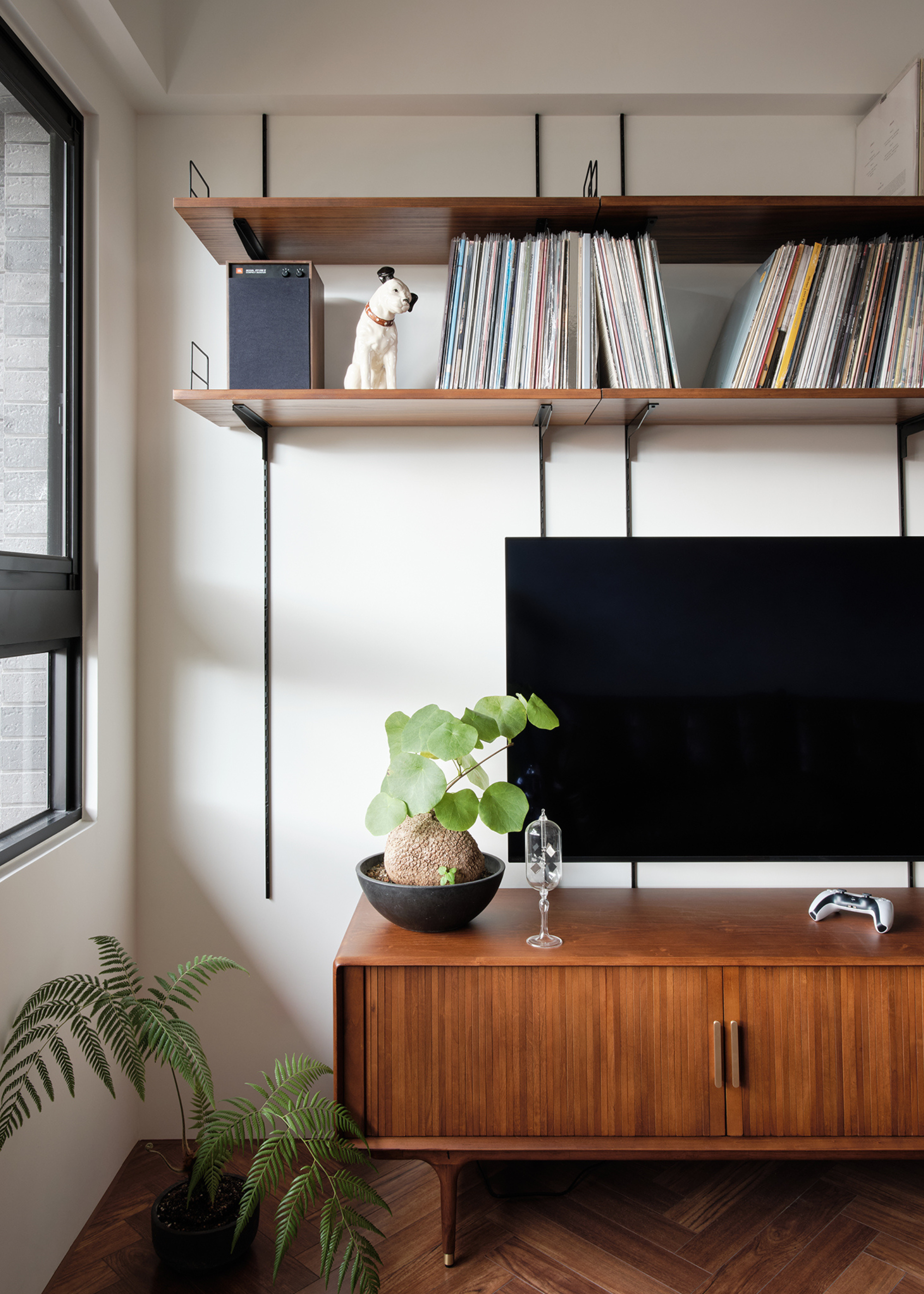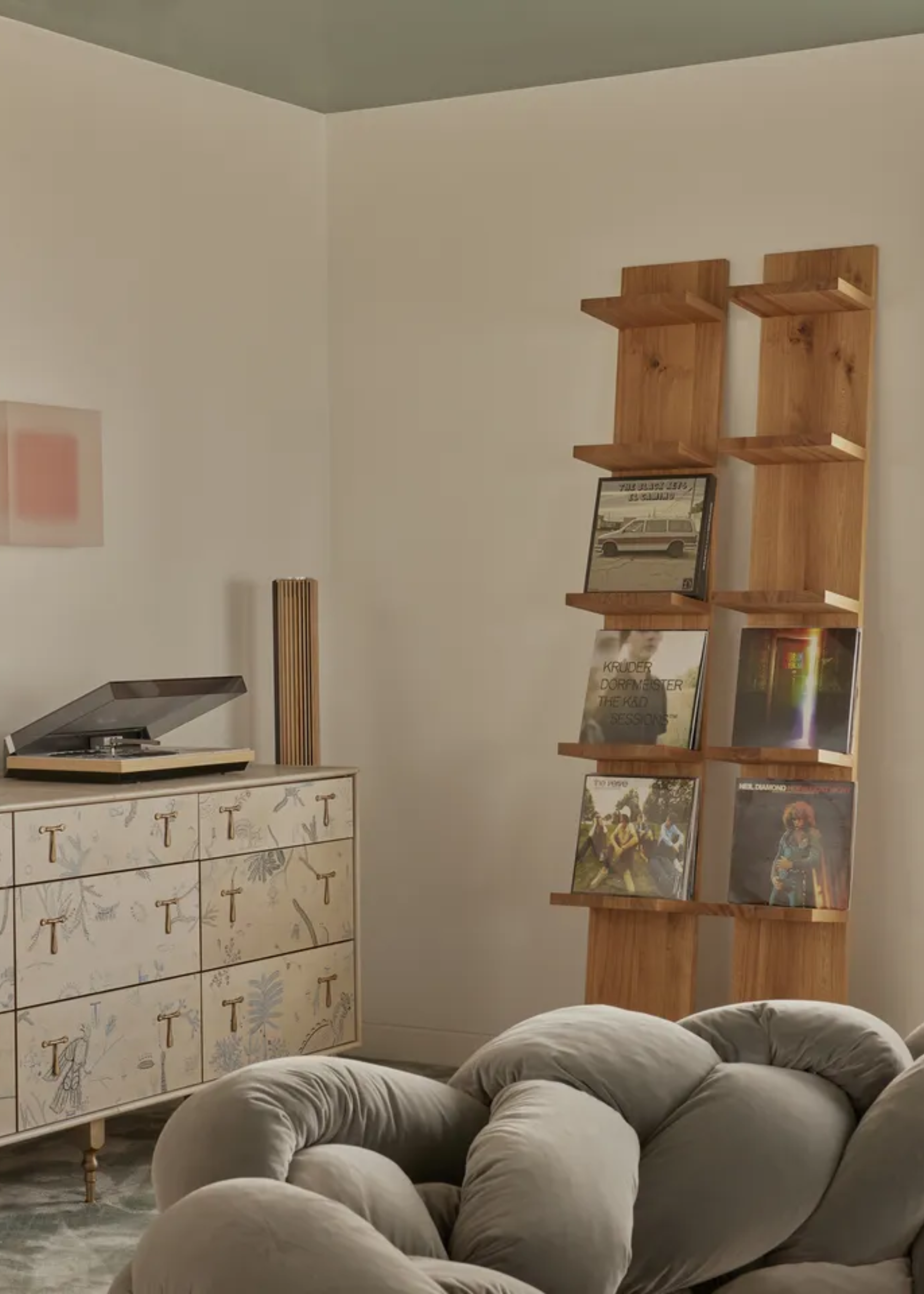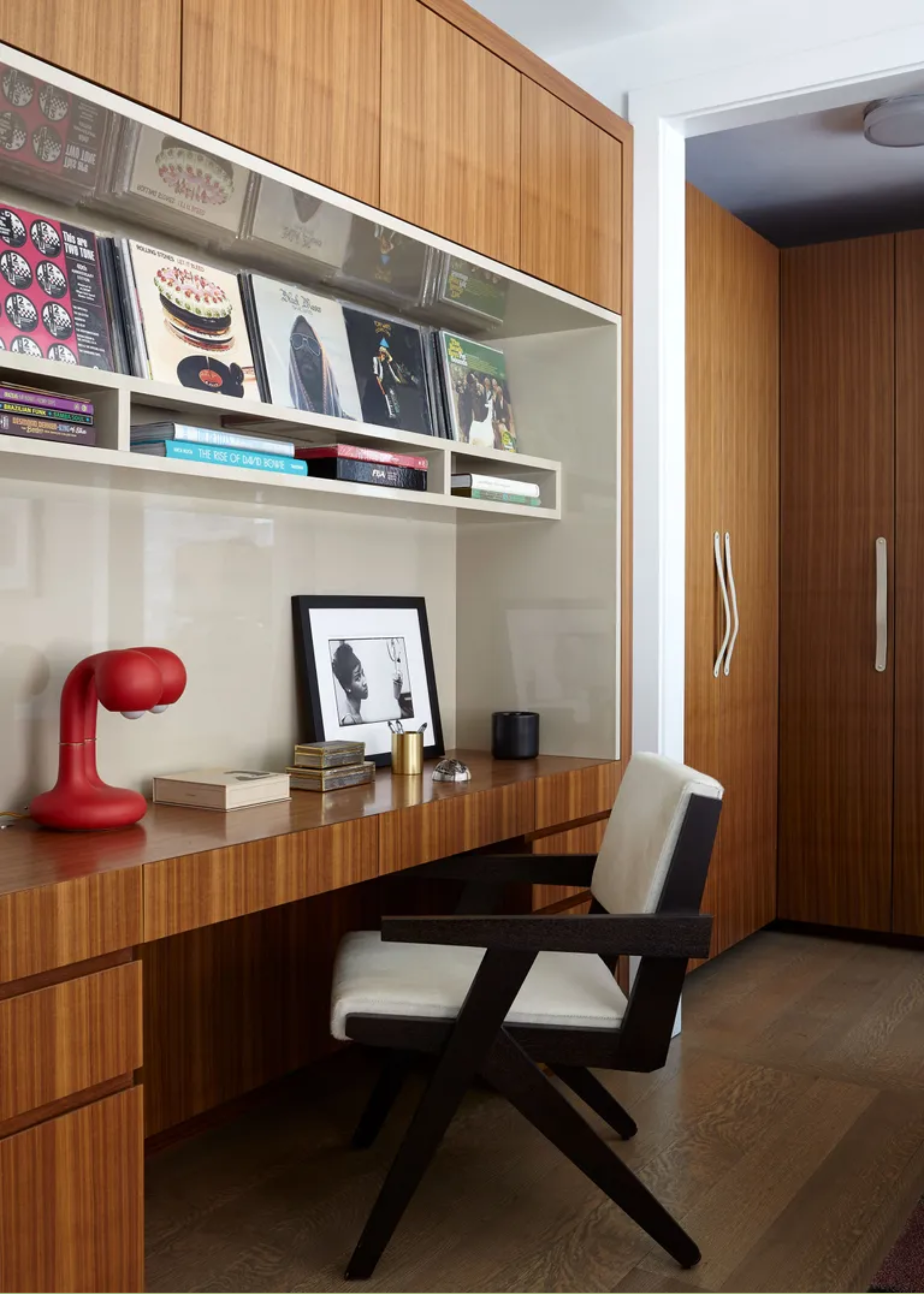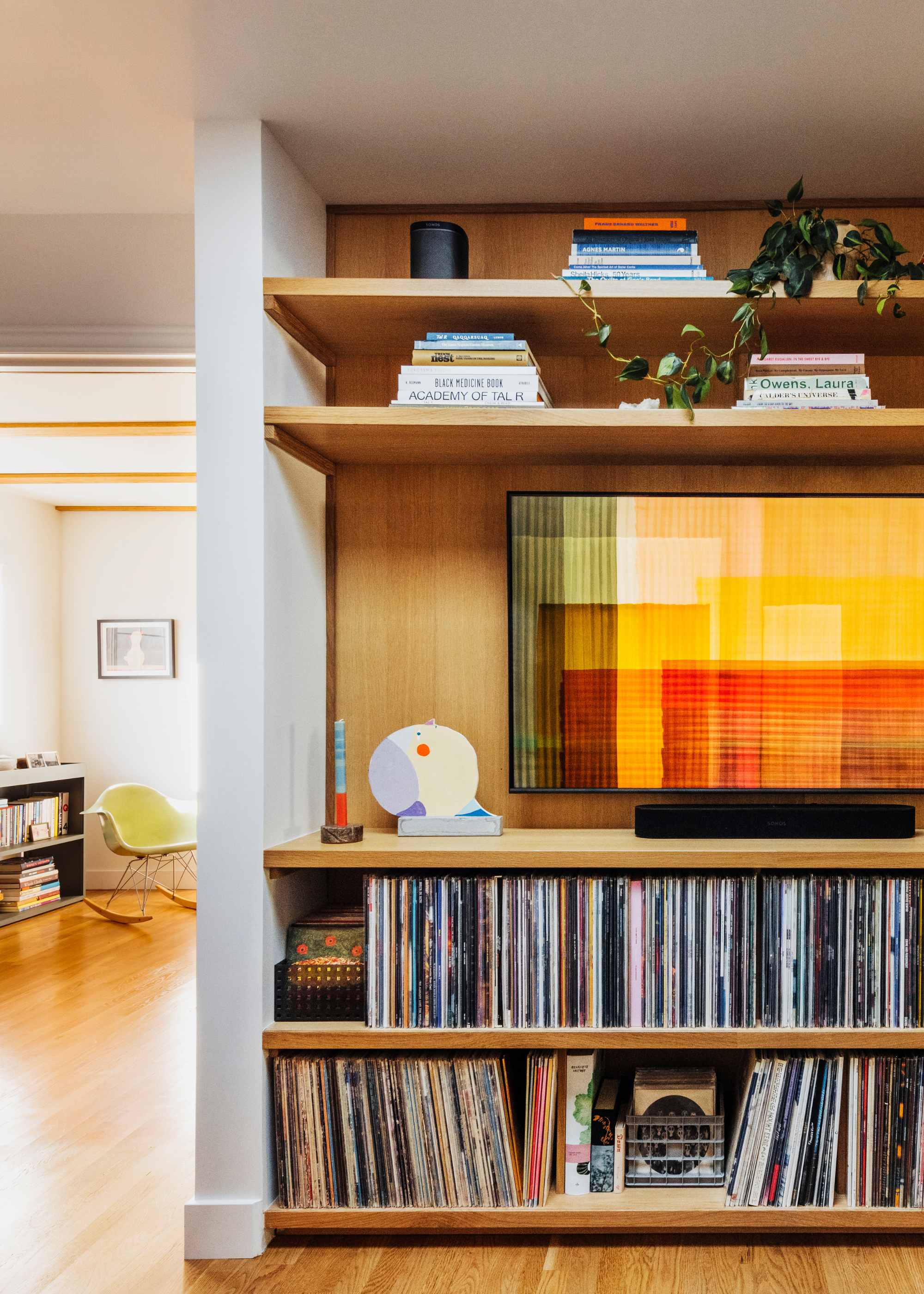
My dopamine menu might change seasonally, but the one aspect that will always remain a constant is a lounging listening session with a comfort album of my choice whistling through my home. Famously preferred as an unbeatable musical experience, most collectors will tell you that there's nothing quite like vinyl.
And even without the knowledge of the technical intricacies that prize vinyl, I can say that I wholeheartedly concur. Considering its fragility, one of the most important things to factor in is vinyl storage and its organization. Haphazard vinyl organization will lead to records getting lost in the mix and potential damage, too.
So instead of losing the quality of your curated collection to disorganized faux pas, here are five clever vinyl organization tips from experts you can trust.
1. Arrange Alphabetically

Steve Sexton, vinyl expert at Sister Ray Records, tells me that alphabetical organization is the best method for a perfectly assembled vinyl record collection.
"Personally, and professionally here at Sister Ray, alphabetical order by surname is the way to go," he says. "I have friends who file by genre, or even chronologically, but if you have a lot of records, and I have a lot of records, the alphabet sorting system is your best bet."
He also shares that his favorite organizational accompaniment to alphabetical sorting includes using IKEA vinyl storage hacks. His personal go-to is the IKEA KALLAX Series for sleek and simple organization.
Mark Burgess, founder of Flashback Records, points out that when organizing vinyl by the alphabet, it's important to have your rules sorted.
"For example, does ’The Jam’ go under 'J' or 'T'. Well, J obviously, you might think, but what about 'A Tribe Called Quest', 'A' or 'T'," he says. "It's entirely up to you, but once you’ve made a decision, stick to it for a cohesively organized collection."
2. Sort Chronologically

If you're only just exploring home audio in the form of vinyl records, then you can get away with sorting your collection chronologically. Arrange them from oldest to newest release or vice versa, depending on your preference.
As you grow your collection, you can also group your vinyl by fives or decades based on how vast your vinyl records happen to be. I find that it's helpful to sort from newest to oldest to have the latest tracks set the mood.
This is also a great hack if you're building an archive of records that are no longer in use but deserve to be preserved and arranged with caution and intention.
3. Organize By Genre or Mood

Vinyl expert Sagolsem Jogita Devi tells me that she swears by organizing vinyl by genre or mood. "I find that this organizational method makes it extremely easy to quickly pick or find the record of the moment," she says.
Once you treat your collection to some vinyl record storage, you can commit to this sorting technique based on the genre you're vibing with at the time. Think of it as curating a playlist and organizing them in separate crates for pop, rock, rap, country, and more. Just as you would while storing CDs.
Or categorize them based on the mood of the day. Be it throwback hits or mood-boosting tunes that are guaranteed to treat your home to a dopamine hit.
Mark also points out that it's important to have a clear idea of your sorting plan when organizing your vinyl by genre as well. "For example, decide beforehand if you'll file your Quincy Jones as jazz, soundtrack, soul, fusion, or anything else, as he has been active in all those areas," he says. "You may want to put each record in its appropriate genre, or just decide all Quincy is jazz!"
4. Utilize Dividers and Labels

"For anyone with a lot of records but limited space, dividers or labels are a must," says Jogita — and I couldn't agree more. Labels and dividers don't need to be limited to kitchen storage and pantry organization.
"They help create clear, curated categories and prevent things from getting mixed up," she notes. "This organization system will make it much easier to find what you're looking for."
This set of DIY Acrylic Vinyl Record Dividers from Amazon is a simple, glossy addition that will make thumbing through your collection a breeze. Plus, you can personalize each divider by writing the genre, alphabet group, or publishing year at the top.
5. Create a 'Rare Records' Section

"Last but not least, I recommend creating a 'rare records' section in your vinyl library," says Jogita. "I do this myself and keep a separate section just for my special, rare vinyls."
If you're a seasoned collector with a couple of gems in your collection, it's best to keep them separately and in a prized location out of harm's way. And of course, every now and then, you can use your best vinyl display tricks to show them off, too.
Not only will your rare section offer the perfect assemblage to impress a guest or two, but it will also put your mind at ease knowing that they are carefully stowed away.
Color: Vintage Brown
This KAUI Vinyl Record Storage from Amazon is perfect if you're only beginning to grow your collection, or even if you like to have a select seasonal few within reach at all times. Pop it on a shelf or a side table for a decorative touch.
Color: Brown
I love this Clara Low Media Storage Console from Urban Outfitters for its sleek form and playful bobbin feet. Arrange your vinyl collection on either side and leave the middle compartment free for your record player.
Color: Olive
I have had this Soho Home Meard Leather and Brass Magazine Rack from Selfridges on my wishlist for some time now. And although it's made for magazines, I find that it would work just as well for a handful of current favorite vinyls.
FAQs
Is it Better to Store Your Vinyl Records Flat or Upright?
Where vinyl record organization is concerned, it's better to store your collection upright rather than flat. While the latter is technically doable, it can cause slight vinyl warping over time. Hence storing them vertically is better for their longevity and also allows for easy access.
Although not a hack for physical vinyl organization, I will leave you with Jogita's final pro tip, which calls for logging inventory on Discogs. This is a clever hack for collectors with vast collections that need a record of every vinyl they own.
"Not only does it help me track what I have, but it also gives me insight into the release year, value, rarity, and sometimes even the history of the record, or the artists," she adds.
So once you have your vinyl collection all organized and sorted through, use Discogs or your e-vinyl inventory app of choice for a systematic finishing touch.







